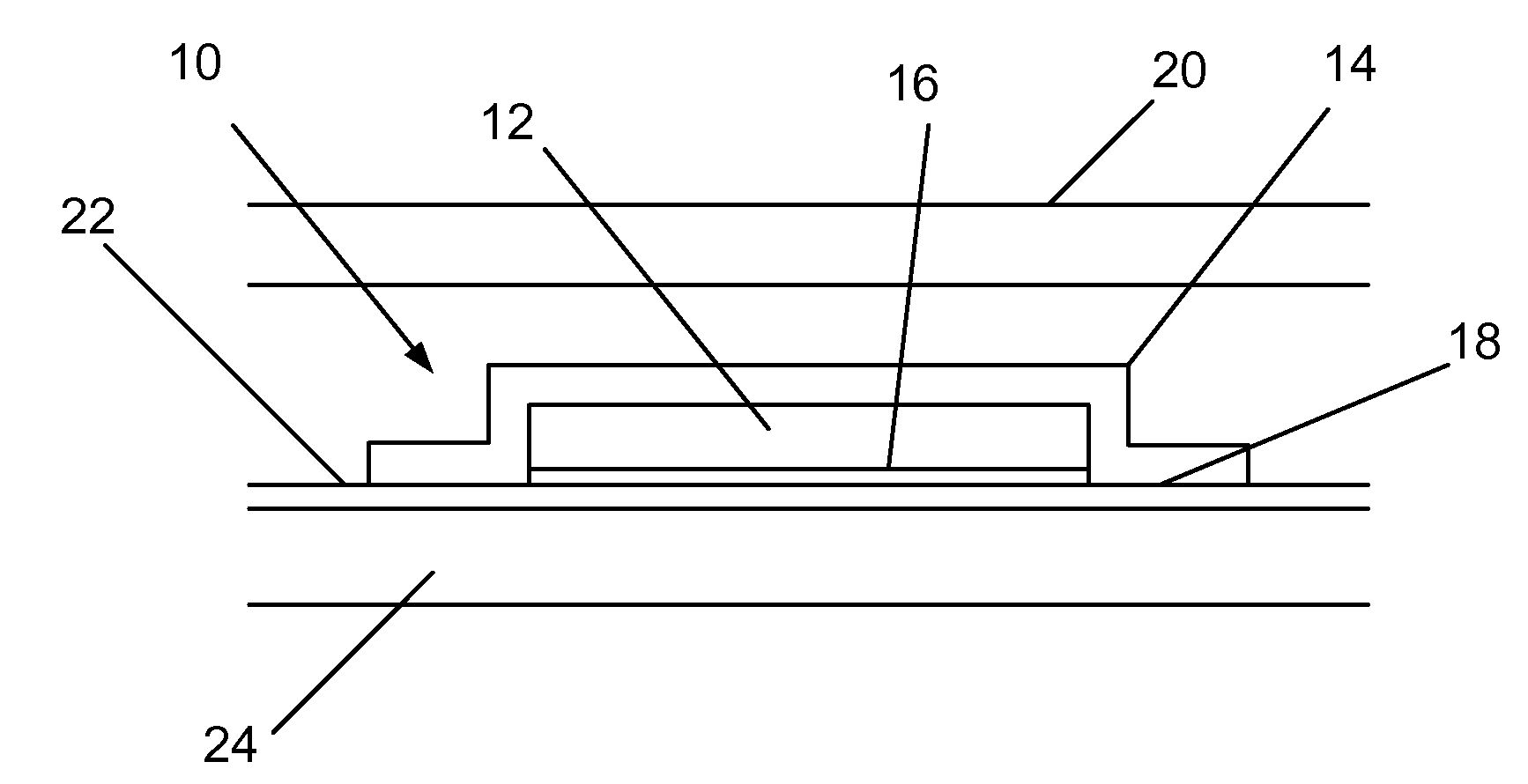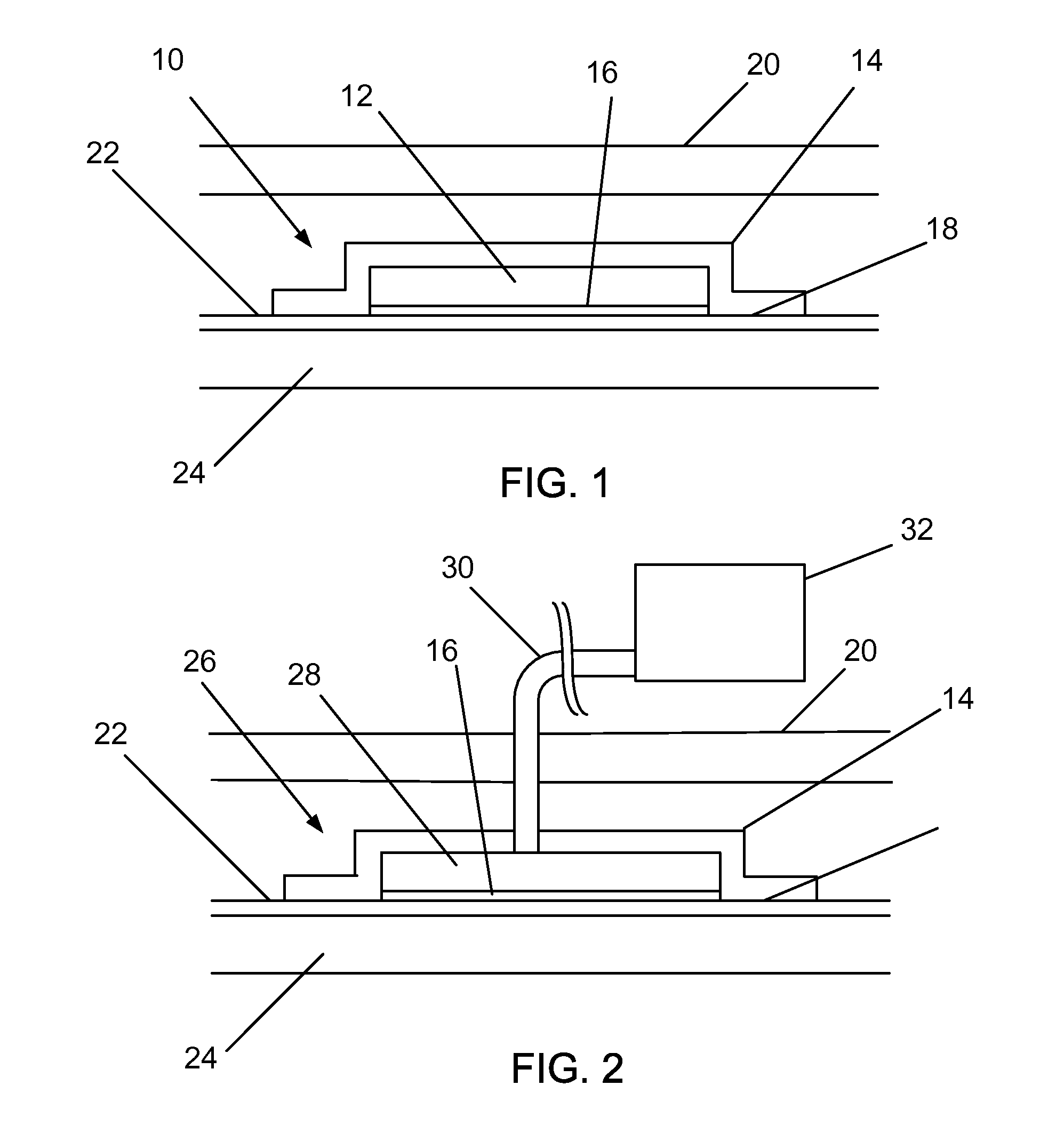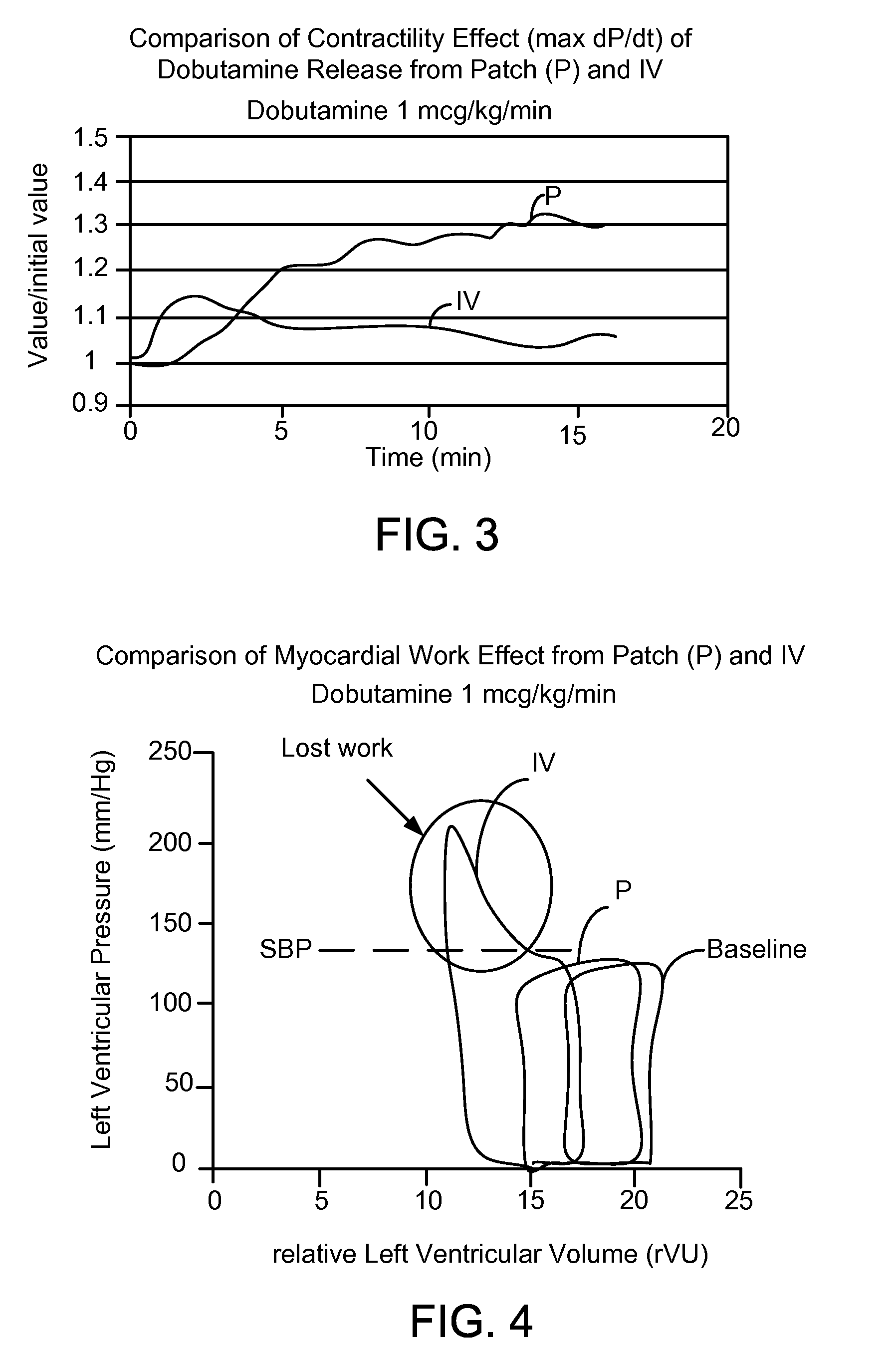Devices and systems for local delivery of inotropic agents to the epicardium
- Summary
- Abstract
- Description
- Claims
- Application Information
AI Technical Summary
Benefits of technology
Problems solved by technology
Method used
Image
Examples
example 1
[0095]A Sprague Dawley rat was anesthetized with pentobarbital and catheters were placed in the right internal jugular vein and right femoral artery for continuous pressure measurement and IV access. An arteriotomy in the right carotid artery allowed passage of a Millar (Houston, Tex.) conductance pressure-volume catheter across the aortic valve and into the left ventricle. This catheter allows measurement of indices of myocardial contractile function. A tracheotomy was performed and the animal ventilated prior to sternotomy and chest retraction.
[0096]A pericardial drug releasing platform was made from a calcium crosslinked alginate disk (6.5 mm diameter) and placed on top of the left ventricle. Dobutamine was then applied to the drug release platform for pericardial inotropic treatments. In vitro experimentation suggested that the drug was released out of the disk into the epicardial tissue at approximately 1 mcg / kg / min. In another experiment dobutamine was infused intravenously (I...
example 2
[0100]Hannaford swine (15-25 weeks old, 45-60 kg) were fasted overnight but given full access to water. Telazol (2 mg / kg IM at a ratio of zolazepam:tiletamine of 1:1) was given IM for sedation. Anesthesia was induced with inhaled isoflurane 2% prior to tracheal intubation (9.0 cuffed). A 22 gauge peripheral IV was inserted into an ear vein for drug administration and volume resuscitation (Ringer's lactate 4 ml / kg / hr). Anesthesia was maintained during surgical preparation with isoflurane 2% in oxygen. Respiratory rate was be fixed to 10 breaths per minute and the tidal volume adjusted between 6 and 10 ml / kg to maintain expired end-tidal carbon dioxide between 35 and 40 mmHg. Inhaled isoflurane was discontinued after surgical preparation, and balanced total intravenous anesthesia was initiated with pentobarbital (10 mg / kg / hr) and pancuronium (0.5 mcg / kg / hr) prior to experimentation.
[0101]Vascular access introducer sheaths (7 FR) were placed in a femoral vein, the right internal jugula...
PUM
 Login to View More
Login to View More Abstract
Description
Claims
Application Information
 Login to View More
Login to View More - R&D
- Intellectual Property
- Life Sciences
- Materials
- Tech Scout
- Unparalleled Data Quality
- Higher Quality Content
- 60% Fewer Hallucinations
Browse by: Latest US Patents, China's latest patents, Technical Efficacy Thesaurus, Application Domain, Technology Topic, Popular Technical Reports.
© 2025 PatSnap. All rights reserved.Legal|Privacy policy|Modern Slavery Act Transparency Statement|Sitemap|About US| Contact US: help@patsnap.com



